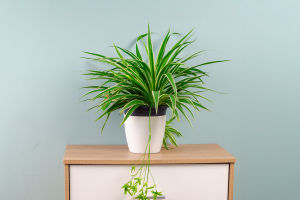Bonsai, the ancient Japanese art of cultivating miniature trees, is more than a decorative practice—it represents patience, balance, and harmony between humans and nature.
Behind every beautifully shaped bonsai lies years of careful attention and deep understanding of its biological needs.
Selecting the Right Bonsai Species
Proper care begins with choosing a species suited to its environment. There are two main categories: indoor and outdoor bonsai.
- Indoor bonsai such as Ficus and Jade thrive in stable temperatures and moderate sunlight, making them ideal for home or office display.
- Outdoor bonsai like Juniper, Pine, and Maple require exposure to natural seasonal changes, which strengthen their resilience and encourage natural growth patterns.
The local climate plays a crucial role in species selection. For regions with distinct seasons, hardy varieties like Juniper or Elm are favorable, while tropical climates benefit from Ficus or Schefflera trees.
Mastering Watering Techniques
The soil surface should be slightly damp to the touch, indicating proper hydration.
Frequency: Watering varies depending on species, place size, soil type, and climate. Typically, most bonsai require watering once daily during summer and every two to three days during cooler months.
Method: The best practice is to water thoroughly until it drains through the bottom holes of the place. This ensures full root saturation and flushes out excess salts. Using a fine mist nozzle or watering can prevents soil erosion and helps distribute water evenly.
Observation: Leaves that wilt or turn yellow may signal improper watering. Monitoring soil texture and tree behavior helps determine the correct schedule.
Balancing Sunlight and Temperature
Light exposure is vital for photosynthesis and overall health. Most bonsai trees prefer bright, indirect sunlight. However, the intensity must align with the species’ natural habitat.
- Outdoor bonsai often require 5–6 hours of sunlight daily. Placing them in partial shade during extreme heat protects delicate foliage.
- Indoor bonsai should be near south-facing windows where sunlight is ample but not harsh. In areas with limited natural light, LED grow lights can maintain proper growth cycles.
- Temperature regulation also matters. Drastic fluctuations can stress the tree, particularly during transitions between seasons. Maintaining a stable range—generally between 15°C and 25°C—promotes consistent development.
Pruning and Shaping for Aesthetic Harmony
Pruning defines the bonsai’s form, balancing its miniature size with natural elegance. Two techniques—structural pruning and maintenance pruning—work hand in hand to achieve this balance.
- Structural pruning is performed during early spring or late autumn to remove thick branches and shape the primary structure.
- Maintenance pruning is done throughout the growing season to control new shoots and refine the canopy.
Wiring is another essential aspect of shaping. Aluminum or copper wires gently guide branch growth to achieve the desired silhouette. These wires should be checked regularly and removed once the branches set into position to prevent scarring.
Soil Composition and Repotting
Healthy roots form the foundation of a thriving bonsai. The ideal soil mix must provide adequate drainage, aeration, and nutrient retention. A standard mixture includes akadama (a type of volcanic clay), pumice, and lava rock in varying proportions depending on the species and humidity.
Repotting prevents root congestion and refreshes nutrient supply. Young trees typically require repotting every two years, while mature ones may need it every three to five years. Spring is the best season for repotting, as roots can recover quickly during active growth. The process involves trimming one-third of the root mass and replacing the old soil with fresh, well-draining medium.
Fertilizing for Sustained Growth
Since bonsai grow in limited soil volume, nutrients must be replenished regularly. Balanced fertilizers containing nitrogen, phosphorus, and potassium (NPK) are essential for leaf, root, and stem development.
- During spring and summer, a high-nitrogen fertilizer encourages strong growth.
- In autumn, lower-nitrogen formulas help prepare the tree for dormancy.
- Organic fertilizers release nutrients gradually and improve soil structure, while liquid fertilizers provide faster absorption for trees needing immediate recovery. Consistency and moderation are key—overfertilizing can damage roots and disrupt natural growth balance.
Pest and Disease Management
Like any living plant, bonsai trees are vulnerable to pests such as aphids, spider mites, and scale insects. Early detection is crucial.
- Regular inspection of leaves, stems, and soil surface helps prevent infestations.
- Mild infestations can be controlled by rinsing the tree with water or applying insecticidal soap.
- For fungal diseases, ensure proper airflow and avoid excessive humidity.
Maintaining cleanliness around the bonsai area reduces the risk of pest buildup. Healthy trees with strong immune systems are less likely to suffer from severe infections.
Caring for a bonsai is both a science and an art—requiring attentiveness, precision, and an understanding of natural balance. From watering and pruning to ensuring optimal light, soil, and nutrients, each step contributes to the tree’s miniature perfection. When nurtured with patience and knowledge, a bonsai transforms into more than just a plant—it becomes a living expression of harmony and endurance. Through consistent care, this centuries-old tradition continues to thrive, bringing tranquility and beauty to any space it inhabits.
Bonsai tree care
Video by Bonsai Empire


